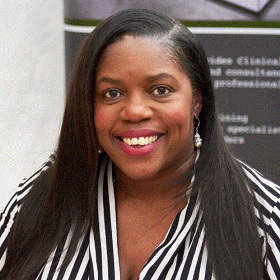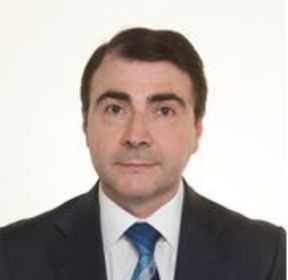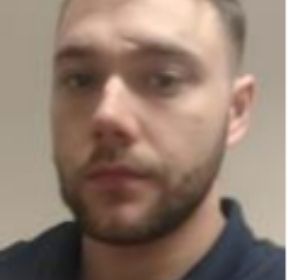Keynote Forum

Lia Hunter
Director, Clinnovate Ltd/ CGX Training United KingdomTitle: The Title Gene Therapy the era of the Hematopoetic stem cell
Abstract:
Since the knowledge of DNA was established, scientists have been working on ways to alter genetic material in order to prevent, treat, or cure medical conditions. Despite gene therapy still being fairly experimental in its applications, it has the potential to completely change the therapeutic industry and could stand as an alternative to drug administration or surgery. In recent years, a new era of gene therapy has arisen, involving hematopoiesis stem cells (HSC), also known as blood stem cells. These are immature cells located in the red bone marrow and peripheral blood. They have the unique ability to develop into all types of blood cells in a process called hematopoiesis In addition, HSCs are able to repeatedly renew themselves, allowing them to be grown in large numbers in the laboratory before being differentiated into specific tissue types. This intrinsic phenomenon is being used as an asset in treating inherited cancers of the blood or bone marrow via transplantation of grown tissues. There are different types of bone marrow/stem cell transplants. The 2 main types are: Autologous transplant (the Stem cells come from your own body) and Allogenic transplant (the Stem cells come from another person, called a donor). The donor's stem cells are given to the patient after the patient has chemotherapy and/or radiation therapy. For many rare diseases this is the only route of treatment available However, it is an aggressive procedure which can create significant short and longterm risks, as well as immune-mediated complications including fertility problems, early menopause, increased risk of developing infections, autoimmune conditions and cancer. HSC transplant using donor cells has the added complication/risk of rejection and subsequently graft vs host disease GvHD and death. As a result, scientists and pharmaceutical companies alike have been conducting clinical research trials to address the safety concerns yet make use of the unique properties of hematopoietic stem cells. Thus, the era of hematopoietic stem cell Gene Therapy has been birthed.
Biography:
Lia Hunter she studied at Cambridge University and she became Director of Clinnovate Ltd/ CGX Training, which is located at UK

Dr. Marcos A. Sanchez-Gonzalez
Florida University United StatesTitle:
Abstract:
Seminar: Developing intranasal/inhalation therapies for the treatment of inflammatory and infectious disorders of the pulmonary system Disorders affecting the respiratory system including allergies, asthma, and upper respiratory infections are a major course of morbidity and mortality in the US. For years it has been accepted that dysregulation of the nasal alternating turgescence of the inferior turbinates may lead to the development of respiratory disorders. Intranasal therapies seem to provide a great means to deliver treatments to regulate the nasal cycles as well as modulate the mucosal microbiome. In a from molecules to population fashion, the present seminar explores the development of intranasal therapies using candidate substances displaying, anti-inflammatory, antiviral, and microbiome modulating effects. The overarching goal of this research agenda is to develop effective interventions to improve the quality of life of those suffering from Pulmonary Disorders. To this end, a series of basic, translational, applied, and clinical studies have been designed to unveil the therapeutic properties of Xylitol, Chlorphenamine, and grapefruit seed extract from the successful management and treatment of both inflammatory and infectious disorders of the pulmonary system. At the end of the seminar, the audience will be able to: • Recite the importance of the nasal cycle and the nasal microbiome as they relate to pulmonary health • Recall the different phases of the therapeutic pipeline in the context of pulmonary disorders • Identify the therapeutic properties of Xylitol, Chlorphenamine, and grapefruit seed extract • Construct a roadmap of the development of intranasal/inhalation therapies for the treatment of pulmonary disorders
Biography:
Dr. Marcos A. Sanchez-Gonzalez
Chief Scientific Officer Company: Dr. Ferrer BioPhrama Mismi FL
United States

Prof David Draper
Brigham Young University United StatesTitle:
Biography:
David O. Draper, EdD, ATC, FNATA, is a professor of athletic training in the department of Exercise Sciences at BYU. He was the head Athletic Trainer at Illinois Wesleyan University prior to his appointment at BYU in 1992. He earned his bachelor’s degree at Utah State, master’s at BYU and his doctorate at Northern Illinois University. He teaches Athletic Training (Sports Medicine) courses at the bachelor’s through doctoral levels with emphasis on diagnosis, treatment and rehabilitation of injuries.
Speakers

Sergio Marcucci
A T Still University, Luxembourg A T Still University, LuxembourgTitle:
Abstract:
Dr. Sergio Marcucci has completed his DHS with concentration in Global Health at the A. T. Still University, College of Graduate Health Studies, Mesa, USA. He received his MSc from A. T. Still University of Kirksville USA, and his D.O. from Sutherland College of Osteopathic Medicine, Belgium. He is practicing osteopathic medicine for 19 years. He had 20 oral presentations and one poster presentation. He has published 11 papers in reputed journals and has been serving as a reviewer board member of three repute journals.
Biography:
The sacroiliac joint (SIJ) is structured by articular surfaces between the sacral and the iliac bones. The SIJ embraces different functions because it connects the spine with the pelvis, which permits the soaking up of vertical forces from the spine and, thus, transferring vertical forces to the pelvis and lower extremities. The first goal of the SIJ is to preserve stability that is partly done by the muscles surrounding the SIJ and realized by various procedures, encompassing a large complex of ligaments connected to the SIJ. The range of motion of the SIJ is evaluated to be around 2 to 4 degrees. 35 muscles attached to the sacrum bone or innominate work together in synergy with the fascia and ligaments to move and ensure the stability of the trunk and lower extremities.

Mr Thomas Donelon
United KingdomTitle:
Abstract:
Cutting actions are associated with non-contact ACL injuries in multidirectional sports due to the propensity to generate large multiplanar knee joint loads (KJLs) that have the capacity to increase ACL loading and strain. Numerous studies have investigated the biomechanical determinants of KJLs in cutting tasks. The aim of this systematic review was to comprehensively review the literature regarding biomechanical determinants of KJLs during cutting, in order to develop a cutting technical framework alongside training recommendations for practitioners regarding KJL mitigation. Databases (SPORTDiscus, Web of Science and PubMed) were systematically searched using a combination of the following terms: “Biomechanical determinants”, or “Knee abduction moment”, or “Technical determinants”, or “Knee loading”, or “Knee loads”, or “Mechanical determinants”, or “ACL strain”, or “Knee adduction moment”, or “Anterior tibial shear”, or “Knee internal rotation moment”, or “Knee valgus moment” AND “Change of direction”, or “Cutting manoeuvre”, or “Run and cut”, or “Run-and-cut”, or “Sidestepping”, or “Side-stepping”, or “Shuttle run”. Inclusion criteria were as follows: studies examining a cutting task < 110° with a preceding approach run that examined biomechanical determinants of KJLs using three-dimensional motion analysis. The search returned 6404 possibly eligible articles, and 6 identified through other sources. Following duplicate removal, 4421 titles and abstracts were screened, leaving 246 full texts to be screened for inclusion. Twenty-three full texts were deemed eligible for inclusion and identified numerous determinants of KJLs; 11 trunk, 11 hip, 7 knee, 3 multiplanar KJLs, 5 foot/ankle and 7 identifying ground reaction forces (GRFs) as determinants of KJLs. Using the framework developed from the results, cutting KJLs can be mitigated through the following: reducing lateral foot-plant distances, thus lowering hip abduction and orientating the foot closer to neutral with a mid-foot or forefoot placement strategy; minimising knee valgus and hip internal rotation angles and motion at initial contact (IC) and weight acceptance (WA); avoiding and limiting lateral trunk flexion and attempt to maintain an upright trunk position or trunk lean into the intended direction; and finally, reducing GRF magnitude during WA, potentially by attenuation through increased knee flexion and emphasising a greater proportion of braking during the penultimate foot contact (PFC).
Biography:
Thomas Donelon is a University Instructor and PhD candidate in Sports Biomechanics and Strength and Conditioning at Canterbury Christ Church University. Tom completed his BSc in Sport Science (Advanced Strength and Conditioning) at The University of Salford in 2016, attaining a first-class degree with honours. During this time he developed a deep interest in biomechanics, predominantly the biomechanics of Strength and Conditioning, and injury incidence and prevention. Previous posts have involved the testing of team GB triple jumpers, 3D motion analysis of elite endurance runners and other athletic populations, alongside a research assistance post in clinical gait analysis. Tom graduated with an MSc in Strength and Conditioning with Distinction from the University of Salford in 2018. Tom acts in a consultancy capacity with numerous sports clubs. Current research interests are aligned to the biomechanics involved in change of direction tasks, their application to performance and injury and if using strength and conditioning protocols can mitigate knee joint loads and improve performance in these tasks.


